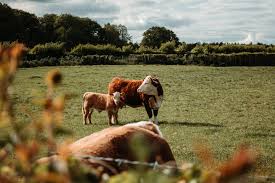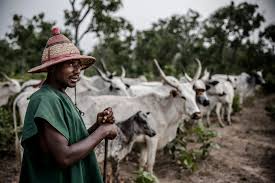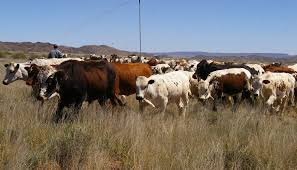There are many grazing management systems adapted by farmers in Nigeria and elsewhere. These systems are further categorized based on the size of livestock owned by farmers and the area of land for grazing.
Where the land is scarce, such as in cities and urban areas, grazing of livestock is rarely possible because of traffic and human inconveniences. Therefore, farmers adopt other means of feeding their livestock to suit the condition they found themselves.
Zero Grazing Management System in Urban and Peri-Urban Farming
This is a grazing management system that is mostly common in urban and peri-urban areas of Nigeria where forage materials are cut and brought to housed animals for feeding. It is sometimes referred to as cut and carry system. It has the following advantages:
- It saves labour in grazing livestock
- It saves costs and time of the farmer
- Farmers determine the type of forage to be fed to livestock
- It helps to clear roadsides and natural rangelands from excess forages during rainy season
- It helps to facilitate re-growth of forages
It may however, have some disadvantages. These include:
- Livestock are forced to feed on only one type of feed provided
- There may be problem of forage rejection or low intake by livestock
- Sometimes it may be laborious especially when the distance is far away from the farm
Read Also: What Kind Of Plastics Can Be Recycled?
Semi-Intensive Grazing Management Systems in Pasture-Based Livestock Farming

These are grazing management systems in which livestock are allowed to have access to pasture for a very long time during the day before they are returned to their pens.
Examples of these grazing systems are continuous and deferred grazing management systems. The advantages of this system of grazing management include the following:
- It helps to improve the quality of livestock products e.g. milk yield etc
- It gives animals the liberty to exercise in the pasture
- It helps to distribute urine and dung evenly in the pasture
- It facilitates the growth of desirable pasture species
- It helps to conserve natural rangelands and pasture resources
- They are cost-effective to the farmer
The main disadvantage of this system is that livestock may be exposed to the problem of toxic pasture species which are undesirable in the pasture.
Intensive Grazing Management Systems on Commercial Livestock Farms
These are grazing management systems in which livestock are completely prevented from grazing outside the farm. These systems are highly efficient in terms of outputs but are expensive to establish.
Examples of these systems include rotational grazing, strip/rationed grazing and straight creep grazing systems. The following advantages are recognized in these systems:
- Increased livestock productivity
- Increased income level to farmers
- Reduction of mortality of young animals
- Easy control of livestock by the herde
- Easy identification and control of diseases and disease vectors
However, the following are some disadvantages of these systems:
- Movement of livestock is restricted to the area in paddocks only. This may affect their health
- They are very expensive to establish by farmers
- Animals are also forced to feed on only one type of pasture species in intensively managed farms
Read Also:Tomatoes Farming: 9 Factors that Hinders High Yield for Profit
Common Grazing Management Systems Practiced by Nigerian Farmers

There are many types of grazing management systems. However, farmers in Nigeria practice not all these systems. These include the following:
1. Zero grazing/Cut and carry system: This involves cutting the pasture from the field and feeding it to livestock in their pens.
2. Continuous grazing system: This system involves keeping the animals in pasture for grazing throughout the year.
3. Deferred grazing system: In this system, some parts of the pasture are prevented from grazing by livestock until certain times of the year.
4. Rotational grazing: This involves grazing livestock in paddocks for a certain number of days before they are moved to another paddock.
5. Strip grazing system: In this system, livestock are allowed to graze an area demarcated with electrical strip. Animals are lightly shocked when they touch the strip.
6. Straight creep grazing system: This involves a creep area for young animals and a base pasture for the dam or mother. It is done to improve growth of young animals.
7. Forwards creep grazing system: This involves the use of base pasture for animals with high nutrient requirements e.g. young animals first, before others.
8. First and last suizers grazing system: This system considers different classes of livestock for grazing at the same time e.g. cattle, sheep and goats.
In this article, the definition of zero grazing management system, its advantages and disadvantages are provided. Also, semi-intensive and intensive management systems of grazing are mentioned. However, farmers in Nigeria do not practice some of these systems.
Do you have any questions, suggestions, or contributions? If so, please feel free to use the comment box below to share your thoughts. We also encourage you to kindly share this information with others who might benefit from it. Since we can’t reach everyone at once, we truly appreciate your help in spreading the word. Thank you so much for your support and for sharing!

